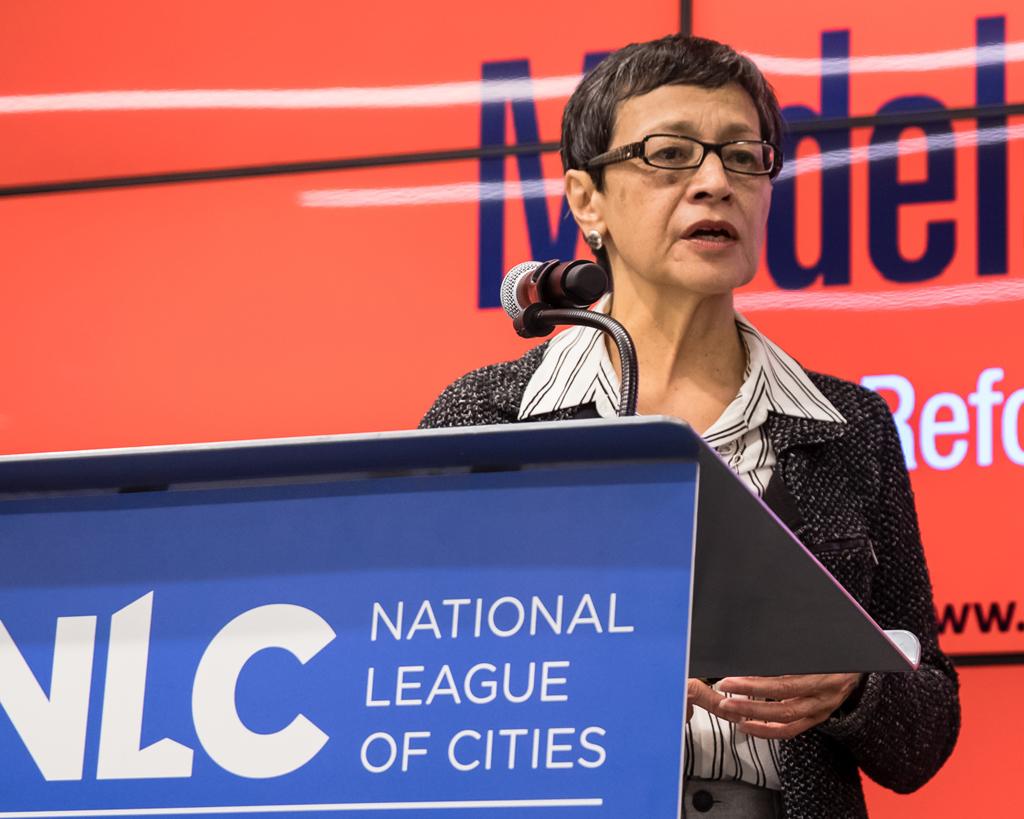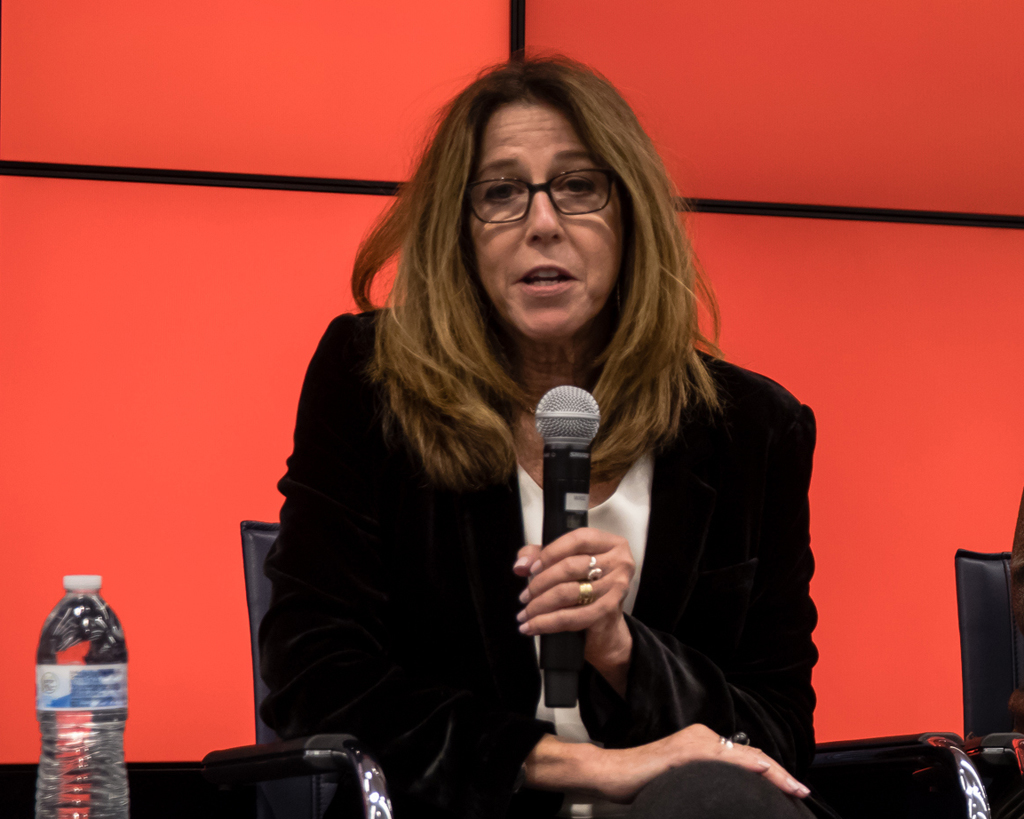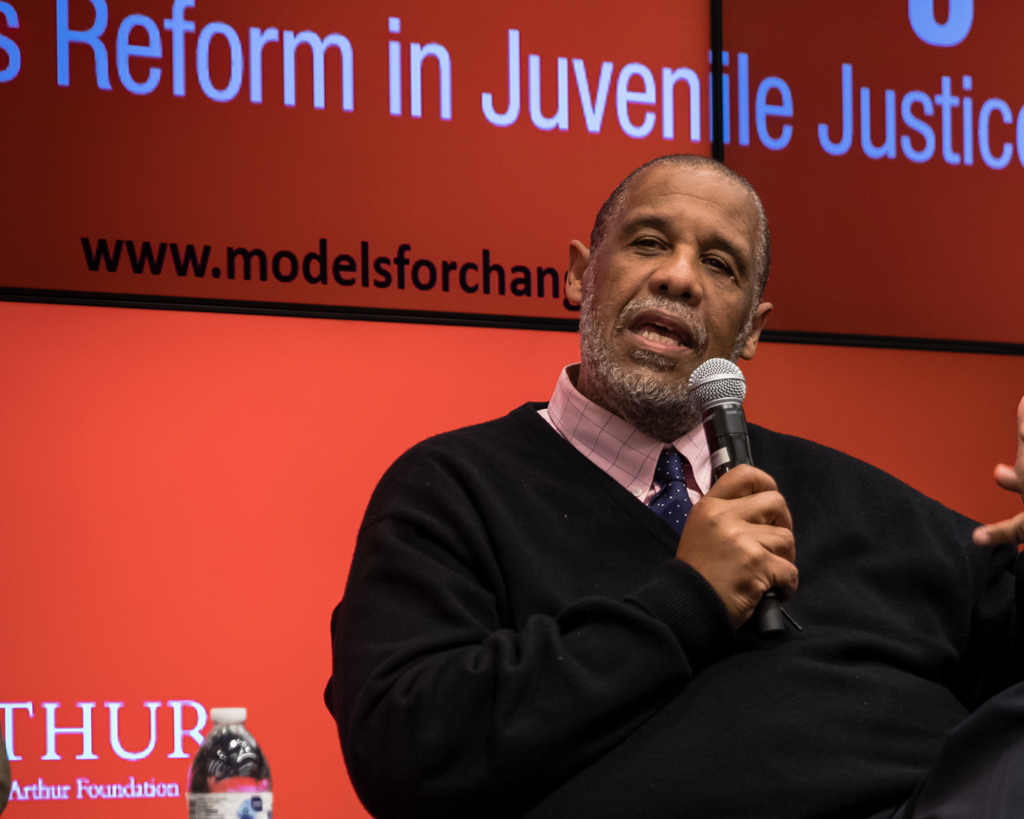WASHINGTON — James Bell, founder and president of the W. Haywood Burns Institute, told a gathering of juvenile justice reformers earlier this month that it was time to begin “an uncomfortable” conversation about racial disparities in the youth justice system.
He made the comments to Models for Change stakeholders gathered here to discuss the John D. and Catherine T. MacArthur Foundation’s final evaluations of the $121 million juvenile justice reform initiative, which began in 2004. It ended as MacArthur changed its emphasis from reforming youth justice to jail reform.
The daylong meeting centered around the many success Models for Change helped bring about, from reducing incarceration sentences to influencing states to stop shackling youth in courts to raising the age at which teens are treated as adults in court.
[Laurie Garduque video | Accomplishments]
Bobbe Bridge, founder and president of Center for Children & Youth Justice in Washington state, said, “Models for Change was certainly the catalyst in accelerating reform. We have certainly changed the conversation.”
Yet, thanks in part to Models for Change support for data collection, it is apparent that racial disparities in the youth justice system, if anything, have gotten worse, not better.
A MacArthur-commissioned evaluation of Models for Change by Mathematica Policy Research found that disparity “persists, mostly at pre-Models for Change levels.” The Sentencing Project recently reported that in 2015 black male youth were five times more likely to be locked up than white youth.
[Laurie Garduque video | Racial disparities]
Speaking of the reforms, Bell said, “What we now know after 10 years of informed analysis is that all of those things have benefitted white kids and the racial disparities persist.”
In the past, he said, the reformers wanted “to get something rather than nothing” so the discussions that might have made decision-makers uncomfortable didn’t happen. Now, he says, “As we go into 2.0 of reform policy we are going to make people very uncomfortable to examine why the disparities still persist.”
Laurie Garduque, who led the Models for Change initiative at the MacArthur Foundation, said although the disparities rate has not improved, the harm done to youth in the system has been reduced for kids of color. “Fewer of them are being swept up in the system, more of them are being diverted and remain in the community, fewer are incarcerated; the incarceration rate has dropped dramatically, somewhere between 40 and 60 percent depending on the state,” she said.

Laurie Garduque
She added, “You are dealing with a host of economic, structural and political issues … you can’t expect the justice system to overcome. So there has to be an acknowledgement that we can make the system fairer and more just, but the deck is stacked against certain groups in such a way that it is very hard to make it equitable.”
The Mathematica evaluation reports that in states where Models for Change concentrated its effort:
- “Significant paradigm shifts not only continued during Models for Change, they were propelled by it ...
- “State and local stakeholders became more aware of the harms of detaining youth, particularly low risk youth, in out-of-home placements.
- “The poor conditions that characterized confinement drew attention and litigation.
- “Evidence mounted about the ill effects of formal involvement in the justice system.
- “As these perspectives took shape, so did intentions to divert youth from pretrial detention and secure confinement and from the justice system entirely.
- “As interest in diversion and serving youth in the community grew, evidence-based programs emerged as desirable alternatives to secure confinement and formal processing.“
Models for Change was not the only group influencing change. The Annie E. Casey Foundation’s Juvenile Detention Alternative Initiative (JDAI) is active in seeking community-based alternatives to youthful incarceration.
Donald K. Ross of Malkin & Ross said his public policy firm, which worked for Models for Change, hired 56 different lobbying firms to work with states to help bring about reforms. For example, at the beginning of Models for Change in 2004 only 10 states forbade shackling of youth in courtrooms. Today there are 31 such states.
[Laurie Garduque video | Changes]
Marsha Levick, deputy director and chief counsel of the Juvenile Law Center, said that when the U.S. Supreme Court ruled that kids are different, it gave everyone the freedom to use the youth developmental language. Yet, “what we haven’t eliminated is a persistently punitive response to offending in this country that still infiltrates and drives our criminal justice system.”
[Laurie Garduque video | Language]
Garduque said the research the MacArthur Foundation helped underwrite established the legally relevant ways that kids are different from adults, which was made concrete by Supreme Court decisions. Now there is a reluctance to think of young people as the worst thing they have done and focus instead on the individual young person.

Marsha Levick
The field was forced to ask, she said, “How can we hold young people accountable for their transgressions in ways that recognize that they are not adults and doesn’t jeopardize their future life chances and gives them the skills and competencies to become successful adults?”
[Laurie Garduque video | Future]
What’s most gratifying for her is that “Those principles have been adopted and now seem to be secure and are the basis for another generation of law and policy reform where we are rolling back those harsh and punitive sanctions.”
Leonard Witt is executive director of the Center for Sustainable Journalism, the publisher of the JJIE. The JJIE was a MacArthur Foundation Models for Change grantee.
Hello. The national Knight Foundation and the Democracy Fund like our work so much that they have agreed to match donations of up to $1,000 per person. They will spend up to $28,000 through the end of December.
So this would be an especially good time to donate to the Juvenile Justice Information Exchange. Any money you give us up to $1,000 will be doubled.
Our independent journalism on the juvenile justice system takes a lot of time, money and hard work to produce. But we believe it’s crucial — and we think you agree.
Thanks for listening.
